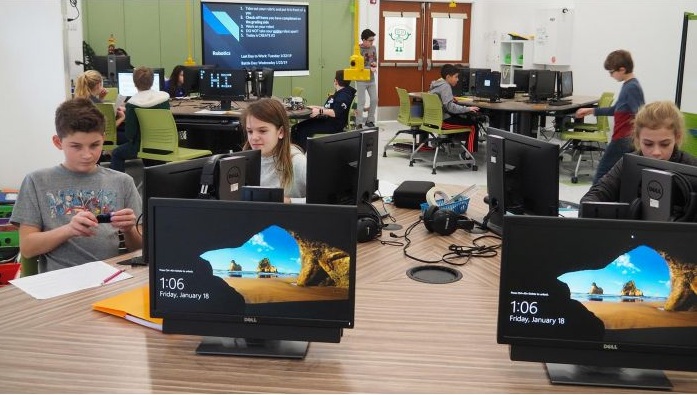
What Style of Classroom Arrangement Is Most Effective for Collaborative Learning Activities?
Classroom design needs to be intentional. But what does that really mean? You need to understand what you hope to accomplish within a given classroom. This can help you align the design of the space with your goals. If you intend to run a collaborative or versatile classroom, it must be designed with those objectives in mind.
Choosing the right furniture is a staple of a well-designed space. Picking the right (or wrong) furniture makes or breaks the overall design. Collaborative furniture empowers participation, cooperation, and teamwork. It’s worth noting this doesn’t just apply to school classrooms. Well-designed spaces like a company’s instruction room or a university’s common area enable better collaboration and learning. We break down a few classroom layouts for effective learning and collaboration below.
What Is Classroom Arrangement?
Classroom arrangement refers to the organization of furniture, technology, and other components within a classroom, including tables, chairs, desks, classroom materials, and more. The more intentionally a classroom is arranged, the more likely it is to be an effective learning and collaboration environment.
One example of this is having the right kind of technology for your class’s needs. You might opt for desks and tables with integrated computers or tablets. This kind of flipIT technology allows for computers to be out when needed and easily stowed away when not. Other classroom design and arrangement considerations include providing power and internet access to everyone, as needed. There are several great ways to do this, including:
● Power troughs integrated directly into tables and desks
When trying to determine the most effective arrangement for a classroom, consider how everyone should sit. Effective classroom seating arrangements directly impact how students and teachers interact with each other. As such, the importance of seating arrangement in a classroom should not go overlooked.
How Does Seating Arrangement Affect Learning?
There are several effects of seating arrangement in a classroom. If you want students to collaborate on a specific assignment, the seating arrangement needs to be geared towards that goal. Desks or tables should be arranged in a format to facilitate student collaboration, like:
● Arranging tables in square clusters so that every student within a cluster of tables is able to see and hear each other.
● Arranging all of the desks or tables in a big circle so that everyone in the classroom is visible.
● Arranging desks or tables in a U-shape so that all of the students have sightlines to each other while still being able to focus on a single point at the head of the room.
What Is A Traditional Classroom Seating Arrangement and How Can It Be Improved?
Traditional classroom seating arrangements often consist of rows of desks or tables. In an arrangement like this, students only see ahead of them and the person to their right or left. While this is a good classroom seating arrangement for talkative students when you want them to pay attention and be quiet, it can limit peer interaction. After all, collaboration plays a substantial role in modern learning environments. The traditional classroom seating arrangement needs a fresh perspective.
One way to enable collaboration (which we touched on above) is to arrange existing tables and desks in more group-oriented layouts. Aside from that, though, collaboration specific furniture is an essential investment for modern learning environments. For example, pieces like our Exchange Active Learning Classroom Technology Furniture are designed with collaboration in mind. They can be configured in over a dozen ways and you can integrate technology and power right into them, giving every single participant equitable access to the tools they need to perform well. Other collaboration furniture designs include iGroup Active Learning Tables, a line that takes things back to basics and emphasizes human interaction and cooperation.
SMARTer Design, SMARTer Collaboration
At SMARTdesks, our mission is to help create thoughtfully designed, collaborative spaces. We do so by guiding you through the entire design process. From start to finish our experts help you determine the exact needs for your space and bring your vision to life. Our cutting-edge products are crafted from top of the line materials. Whether you need to design a room from scratch, or want to revamp an existing space, our consultants are here to help. To get started on your next project, contact us today.

